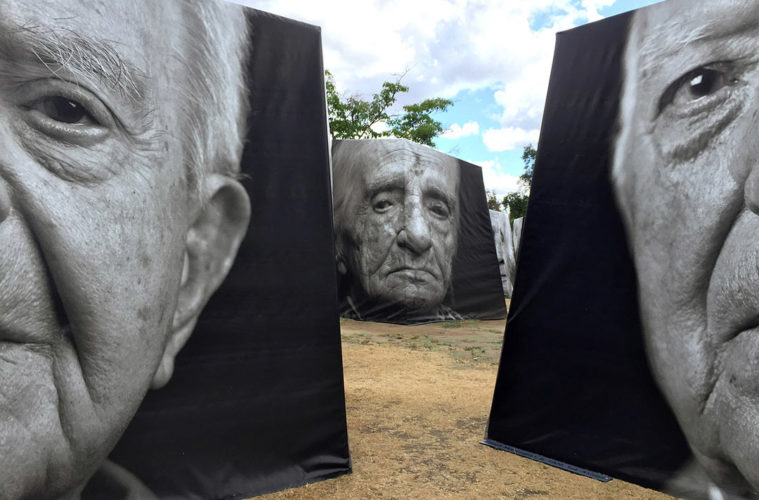In 2017, ReflectSpace opened inside Glendale’s newly remodeled Central Library. The gallery’s first group show, Landscape of Memory: Witnesses and Remnants of Genocide, featured both historical images of the Armenian Genocide and an outdoor installation of contemporary photographs of survivors, among other works.
The gallery is one of only three in L.A. housed inside a library, along with the Brand Library & Art Center and Los Angeles Central Library. It’s a small, quiet space in the middle of the city’s busy downtown where visitors can look at art and history and reflect, just as its name suggests. It’s also part of the area’s expanding concentration of cultural venues, including Tufenkian Fine Arts, Ace 121 Gallery, Abril Bookstore, Antaeus Theatre Company and the future 30,000 square-foot Armenian American Museum.
But ReflectSpace isn’t an Armenian gallery. Since launching, photographer Ara Oshagan and his wife, Anahid, have co-curated more than a dozen exhibits using art, archives, technology and eyewitness accounts that represent other experiences of human rights violations and marginalized communities. It’s one of the few galleries in the country dedicated to social justice issues, bridging different cultures and histories that many might think have little in common.
“We want to talk about the genocide as it’s connected to other chapters in history,” says Oshagan. “We’re inclusive and we’re authentic to the voice of the community we’re representing. There has to be a witness narrative.”
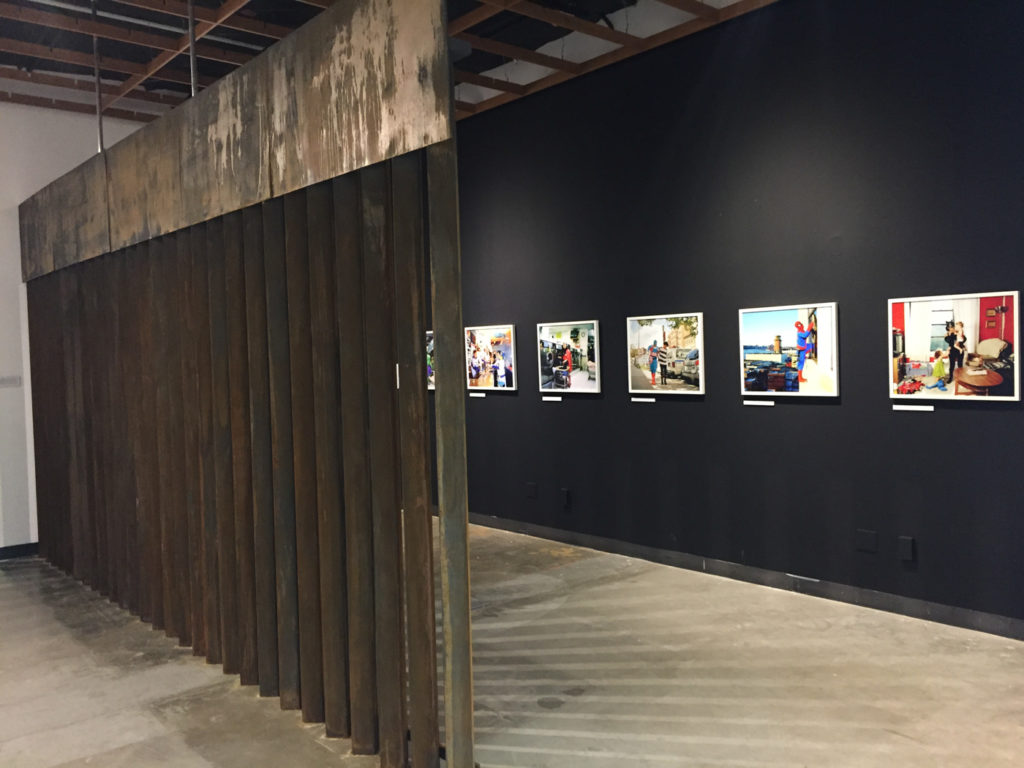
Ara Oshagan, Invisible Replica of the San Diego/Tijuana Border Wall (ReflectSpace)
“Diasporic identity” has been the main thrust of Oshagan’s career. Born of Armenian descent in Beirut, he moved to L.A. in 1982. A self-taught photographer, he started his first series, “Traces of Identity,” in 2000, capturing Armenian immigrants at weddings, schools, protest marches and in their backyards from Hollywood to Palmdale. He’s photographed the Armenian village that bears his family’s name, and Nagorno-Karabakh — the disputed border region claimed by both Armenia and Azerbaijan — which he traveled to with his father and included in one of his two photography books, 2010’s Father Land.
“I look at my own history and try to articulate that,” says Oshagan. “What’s my relationship to the land there and to the land here? You can really only create art that you’re really connected to, whether it’s historic, emotional or physical.” He’s also documented Californians in the Central Valley, Ethiopians in L.A., incarcerated youth and Asian “Comfort Women,” the latter a recurring theme at the gallery.
ReflectSpace’s origins date back to 2001, when Glendale’s Citizens’ Memorial Advisory Committee proposed a room at a library or public facility that would address not only the Armenian Genocide, but all “crimes against humanity.”
“They wanted a space for discourse,” says Anahid.
Two years later, the Central Library inaugurated the Genocide Memorial Collection, which focuses on genocides “as defined by the U.N.,” and carries books, videos and DVDs. Ara had exhibited at the branch in previous years, so when it shut down for renovation in 2015, the library director approached him about curating a new gallery inside the library.
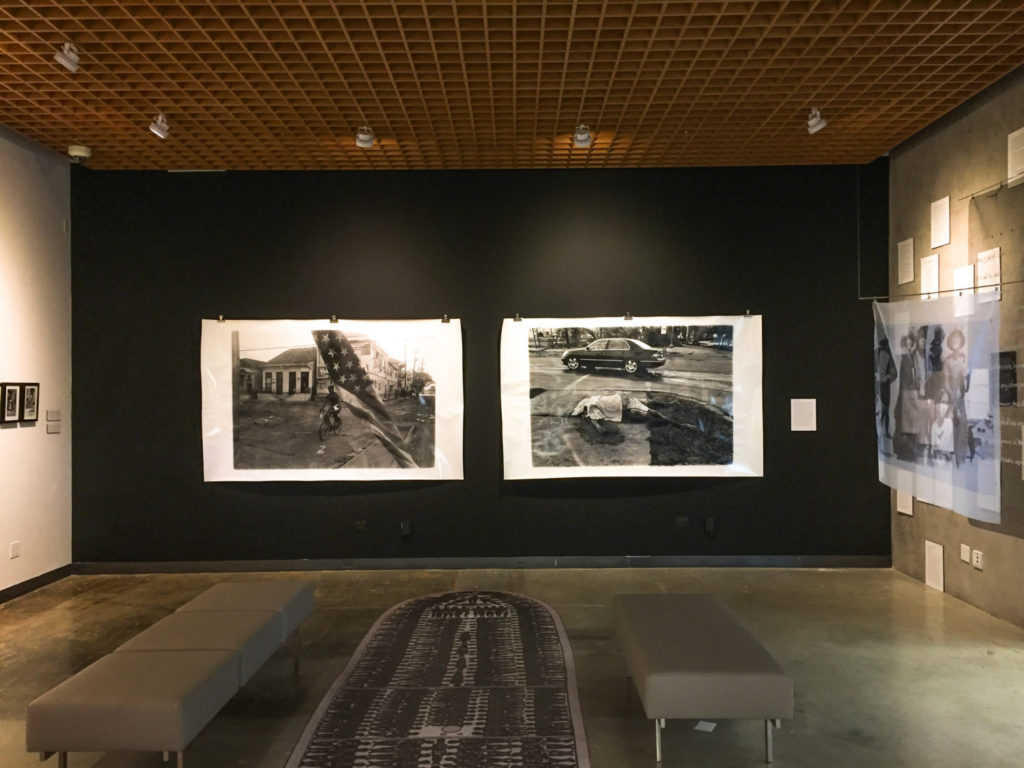
Clarence Williams, Wake (ReflectSpace)
Though ReflectSpace focuses on Glendale, past collections have explored — in both historical and “post-trauma” contexts — the Holocaust, American slavery, Japanese-American internment camps, the treatment of Native Americans, the war in Afghanistan, LGBTQ rights, and the U.S. prison system. “In|visible: Negotiating the U.S.-Mexico Border,” for example, contained an interpretation of the San Diego-Tijuana border wall that split the gallery in half, as well as photographs of Mexican immigrant workers dressed as superheroes.
And the exhibits on comfort women have honored the many Asian women, especially Koreans, who were used as sex slaves by the Japanese military during WWII. Glendale commemorates “Comfort Woman Day” every year. In 2013, it also erected the Peace Monument statue, a replica of the one in Seoul, South Korea, located in Central Park, near the library.
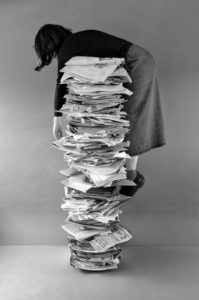
Kim Abeles, Self-portrait with Files/On Top, 1996 (ReflectSpace)
Among the gallery’s upcoming shows is “Access: A Century After Women’s Right to Vote,” opening January 31 and marking the centennial of the passage of the 19th Amendment.
“Glendale has changed a lot over the decades,” says Anahid. “It’s always transforming. Part of the gallery is to document that, but also draw in art that speaks to everything. There’s so much polarization in the community, but this is an attempt to connect people. Our communities are parallel, but they never intersect. There’s an effort here to understand and appreciate who we are and where we come from, all of us. There isn’t just one color, one story, one narrative. It’s about us, but it’s also beyond us.”
ReflectSpace at the Glendale Library, 222 E. Harvard St., Glendale. glendaleca.gov/government/departments/library-arts-culture.
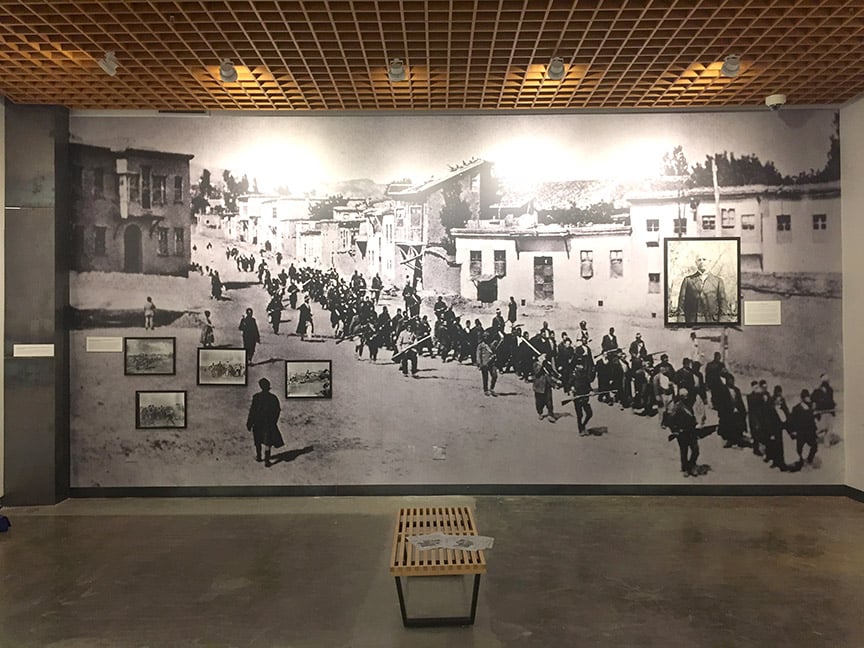
Landscape of Memory/March Out of Kharpert (ReflectSpace)
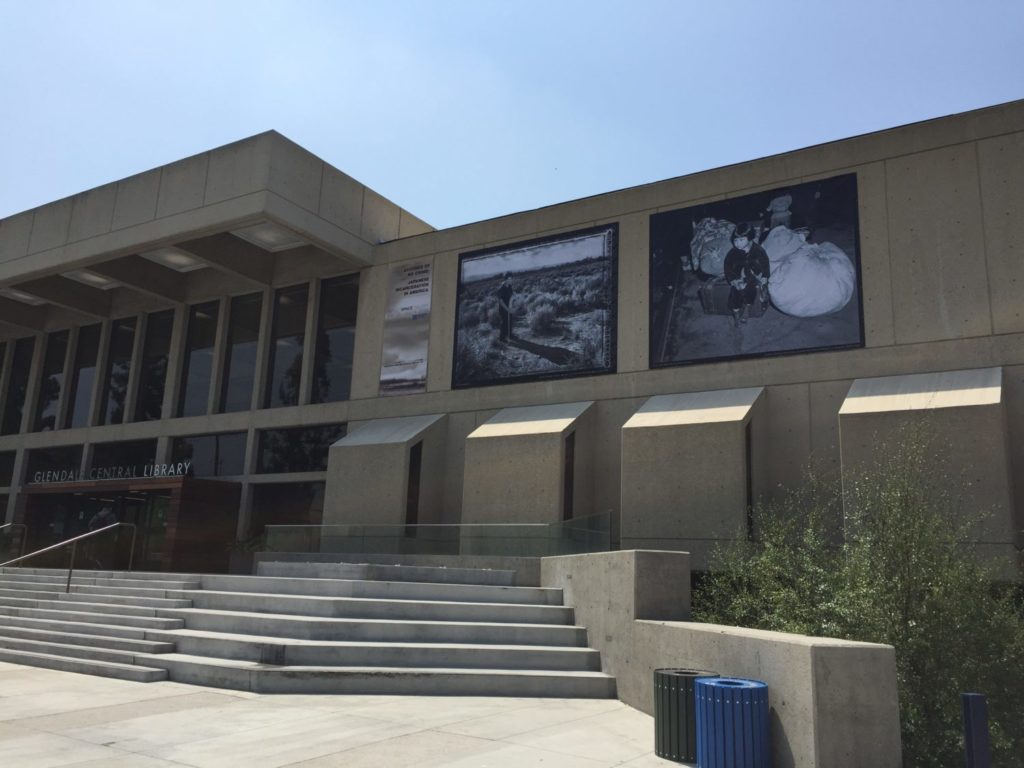
ReflectSpace
Advertising disclosure: We may receive compensation for some of the links in our stories. Thank you for supporting LA Weekly and our advertisers.

